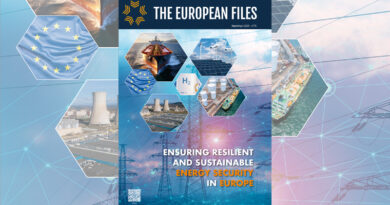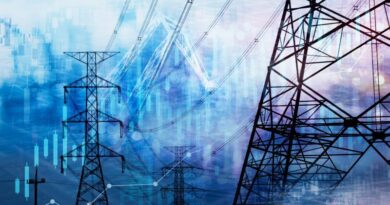
No green transformation without sector coupling?
The current situation with COVID-19 is having a huge impact on the European economy. Even though the pandemic constitutes an immediate crisis, the climate crisis constitutes an existential threat towards future generations, thus staying the greatest challenge to overcome. Part of the solution to both problems may very well be sector integration.
In Brussels, sector integration has already become a buzzword. Sector integration is of utmost importance if we are to integrate renewable energy to the extent that we want – and have – to.
The expansion of wind and solar energy creates a need to utilise green energy in new ways. An option could be sector integration plants where green electricity is electrolysed to hydrogen or refined to other fuels.
Another important aspect of sector integration is district heating and cooling. District heating and cooling are technologies that increase the overall energy system efficiency by recycling energy or fuels otherwise lost and, at the same time, providing flexibility to the heating and cooling markets as well as the energy system in general. This is done by aggregating heat demands in buildings and industries through thermal networks and covering demands with a portfolio of supply options. By integrating district heating and cooling networks with other energy sectors, in particular electricity, their ability to thermally store energy can be utilised to enhance both efficiency and flexibility of these other sectors.
A large CO2 reduction
The enormous amounts of money we need to invest now to get the economy back on track should be as green as possible and at the same time ensure job creation.
A green recovery plan has the potential to create millions of sustainable jobs across Europe.
The so-called Power-to-X (PtX) can go a long way and become a crucial technology if we are to create more sustainable jobs and reach our goal of net-zero CO2 emissions in the EU by 2050. However, to achieve this, we need a quick transition to a green and sustainable energy system. According to a new analysis from The Technical University of Denmark, PtX can for example save Denmark 22 million tonnes of CO over the next 0-10 or 0-25 years. In other words: The potential is huge.
PtX makes it possible to intelligently integrate and connect the different sectors of the energy system. The various energy carriers in the energy system 1) the electricity grid, 2) the gas grid, 3) the district heating grid and 4) the district cooling grid have traditionally been viewed separately. But with PtX, the different energy carriers can be converted to each other so that the energy system becomes more coherent. The four energy carriers should therefore no longer be regarded as four isolated silos. Instead, one can link the different sectors and leverage their respective strengths to provide the flexibility needed in an energy system where the share of green energy becomes greater.
Flying CO2 free
Basing the recovery plan on the conversion of green power to hydrogen or on to other products such as gas, methanol and ammonia has a number of advantages. The technology can help reduce CO2 emissions from sectors such as heavy transport and industry. It is cheaper to store and transport the green energy when it is converted from electrons to molecules. As the conversion process can run very flexibly, it also helps to increase the value of wind and solar in times of excess production.
In the future, we must ensure that all our future energy is green and circular, and that the renewable energy is utilised throughout the community.
It is crucial that we avoid wastage and can create value based on profits in production. For example, bio-waste from agriculture, industry and households can help produce green biogas, which can be used in our existing gas infrastructure.
The cost of PtX is constantly dropping, which makes it a viable alternative to fossil fuels in the future. The costliest part of the process is the electrolysis, which is constantly being streamlined because a number of large European energy companies are currently investing in very large green hydrogen plants. With a strong dedication to this technology, we may one day all be flying on holidays with aircrafts fuelled by CO2-free, liquid aircraft fuel.




